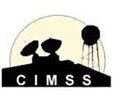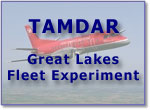


   |
TAMDAR AERIBAGO Validation Experiment (TAVE) OverviewWhere: Memphis, Tennessee Airport When: 22 February - 09 March 2005 PI: Wayne Feltz (UW-CIMSS)
Tropospheric Airborne Meteorological Data Reporting (TAMDAR) systems are currently being installed on 64 Saab 340 turboprop aircraft operated by Mesaba Airlines, a regional air carrier associated with Northwest Airlines. The TAMDAR systems measure relative humidity, air temperature, winds, ice presence and turbulence. A validation study of the water vapor measurement quality will occur during the Great Lakes Flight Experiment (GLFE) between December 2004 – July 2005. The University of Wisconsin-Madison Cooperative Institute for Meteorological Satellite Studies (UW-CIMSS) is deploying a suite of in situ and remote sensing weather instruments at the Memphis International Airport (MEM) to validate moisture and temperature profiles from newly installed the TAMDAR systems on Mesaba Airline aircraft. A mobile laboratory (AERIbago; http://cimss.ssec.wisc.edu/aeribago/) containing a suite of meteorological instrumentation including a radiosonde launch and receiving station, GPS, AERI, a surface meteorological station, and a Vaisala ceilometer will monitor the atmospheric state to validate the Mesaba Airline based TAMDAR system water vapor measurement quality. The instrumentation will include calibrated radiosonde launches for tropospheric temperature and moisture profiles as well as a meteorological station to validate surface conditions. The AERI will provide uplooking radiance measurements for high temporal resolution retrievals of temperature and moisture profiles within the planetary boundary layer. The AERI can also bound the quality of the water vapor profile accuracy (both TAMDAR and radiosonde) in the lower tropospheric by comparing highly accurate downwelling infrared radiation with calculated radiances using the temperature and water vapor profiles. The GPS system will provide high temporal resolution measurements of total column precipitable water which can be used as a stable reference for the radiosonde water vapor profiles eliminating radiosonde to radiosonde calibration differences. The proposed location for deployment will be in the immediate vicinity of the Memphis International Airport (KMEM). The experiment plan is to collect data for a two week (14 day) duration starting nominally in spring 2005. Subject to NASA funding multiple deployments are possible. Radiosonde launches will be timed to give the best temporal correlation with flights carrying the TAMDAR instruments. The launch location will be the same area as the NWS radiosonde launches to leverage their data collection efforts and simplify the logistics of the launch process. Data analysis will include quality control, organization of the data, retrieval of temperature/moisture profiles, and archiving of the results. These data sets and results will be shared with other TAMDAR GFLE participants.
|
||
| Updated on 28 January 2005 Wayne Feltz |
||